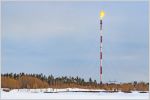
An in situ well cutblock in northern Alberta boreal forest. Photo by Julia Kilpatrick.
Alberta surprised the world last month when it announced the legislative protection of nearly 1.4 million hectares of land adjacent to Wood Buffalo National Park and other provincial parks. Combined, this represents the world’s largest boreal protected area complex.
An important element of the announcement was Syncrude’s contribution of $2.4 million to the Nature Conservancy of Canada to purchase and retire a forestry tenure held by the Tallcree First Nation. This earns Syncrude conservation offsets it can apply to future industrial activities. This could be a game changer for managing impacts from industrial development and setting Alberta up for real world class resource development.
Conservation offsets are also known as “biodiversity offsets,” or “conservation allowances.” They are actions a company takes to provide physical compensation for significant adverse impacts of industrial development. If a company cannot prevent or mitigate the adverse impacts expected from its proposed project, then it would be required to compensate by restoring and conserving land elsewhere.
In addition to restoration required at the end of a project’s life, conservation or restoration efforts in an offset restores more land than the project directly disturbs. For example, under an offset program, when a project creates one new hectare of habitat disturbance, then the expectation may be that the company restores or conserves four hectares elsewhere. It also makes up for the decades a project potentially impacts the land and the fact that human restoration of native habitat is far from perfect.
A formal conservation offset system can be a piece of the toolkit Alberta needs to facilitate further conservation actions, like retiring forestry and energy tenures, or restoring historic disturbances. These actions are badly needed — for example, within caribou ranges much of the 250,000 km2 of human disturbance may need to be restored — and opportunities for companies to contribute offsets by voluntarily returning their oilsands or petroleum and natural gas tenure for permanent conservation could help facilitate better long-term planning by the provincial government.
There is growing evidence that this offsets approach, which has been discussed for over a decade in Alberta and formalized under the province’s wetland policy, could finally be expanded. This needs to become the minimum standard for mitigating development impacts in Alberta and the time is right to provide clarity to all stakeholders about how such a system will be implemented.
For example, the AER’s decision regarding the TransCanada White Spruce Pipeline project proposed in caribou habitat comes with a condition that TransCanada offset project impacts by restoring twice as much habitat in the West Side Athabasca Range as the project affects. The decision notes the goal is to ensure at a minimum no net loss in caribou habitat from the project.
Given efforts to meet federal species at risk obligations to restore and protect caribou habitat to a minimum 65 per cent of the habitat, it’s good the Alberta Energy Regulator (AER) has stepped into the policy gap and identified the need to ensure caribou habitat is not further eroded. In the absence of clear direction from the government, the AER has been left to figure out what responsible mitigation could look like. As caribou range planning drags on, Alberta must demand offsets.
The percentage of protected land in Alberta now stands at 14.8 per cent. Alberta is within striking distance of becoming the first Canadian jurisdiction to legislatively protect 17 per cent of its landscape – aligning it with one of Canada’s 2020 Biodiversity Goals, which is to formally protect 17 per cent of the country’s land and inland water. Alberta could achieve this by protecting other important landscapes in Alberta like the Bighorn Backcountry and caribou habitat in northwestern Alberta, originally proposed in 2016.
Syncrude’s commitment has accelerated the need to determine the offset value of the tenure retirement, and how the AER will treat such action as evidence of offset mitigation. The government needs to provide clarity so that industry has a means to provide solutions to restoration and protection.
The AER’s job is to regulate, and the Government of Alberta’s role is to set policy and direction. With these recent announcements, the offsets train has left the station and it is time for the Government of Alberta to get on board and finally clarify when and how offsets will be required in caribou habitat. In doing so, it could finally unleash much needed mitigation and conservation actions at scale across the province.
Nikki was a senior analyst for the Pembina Institute until 2020 with expertise on fossil fuel development.



